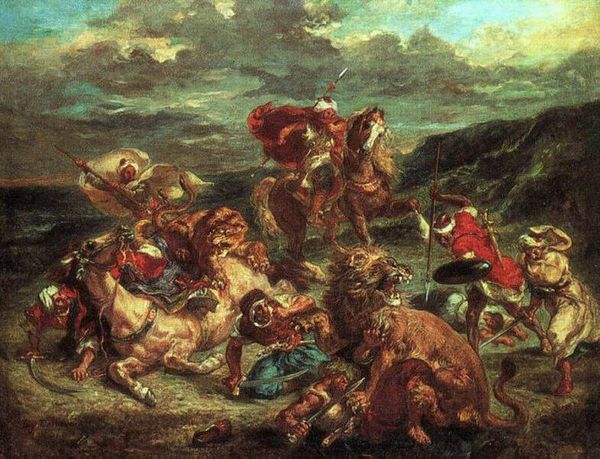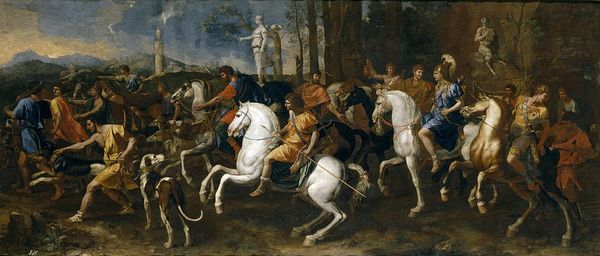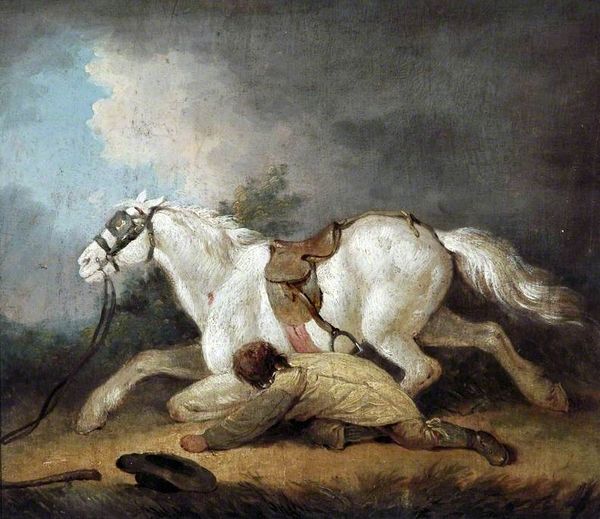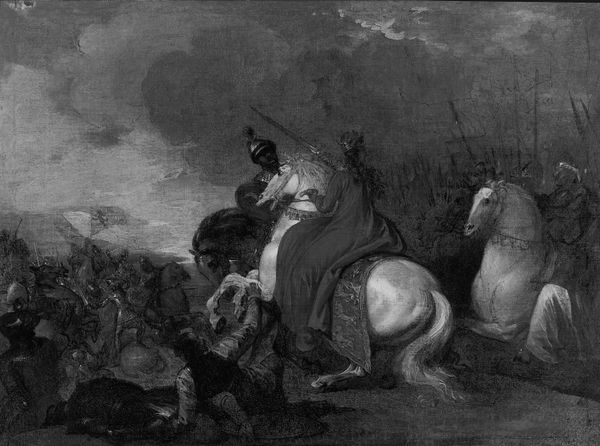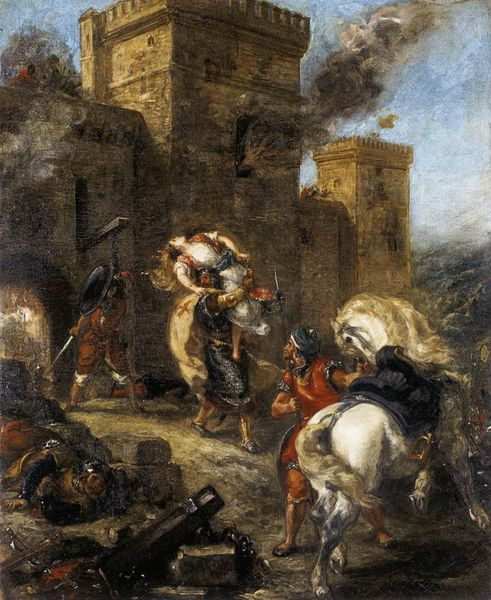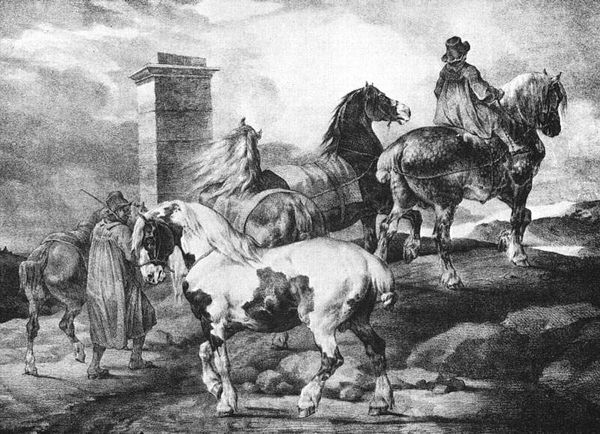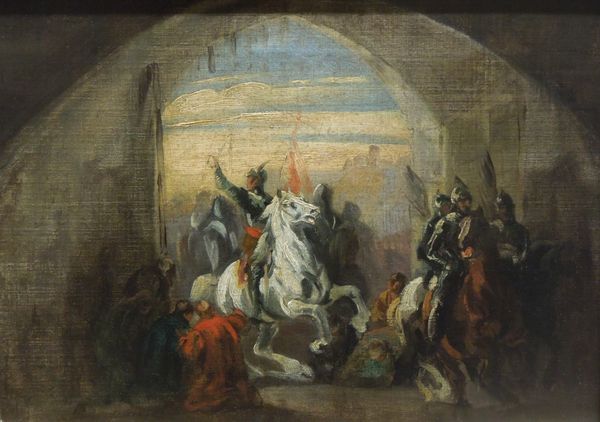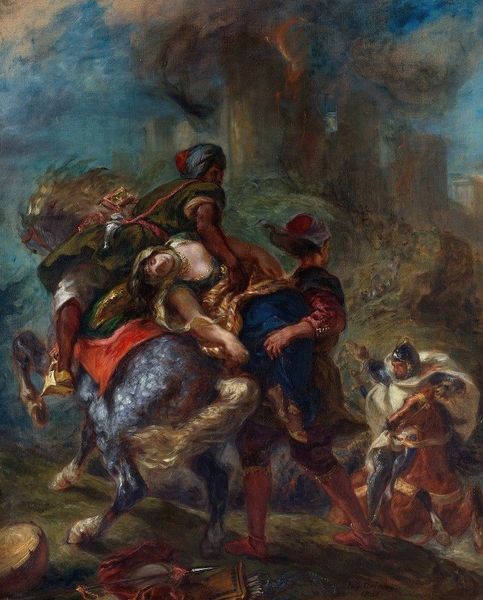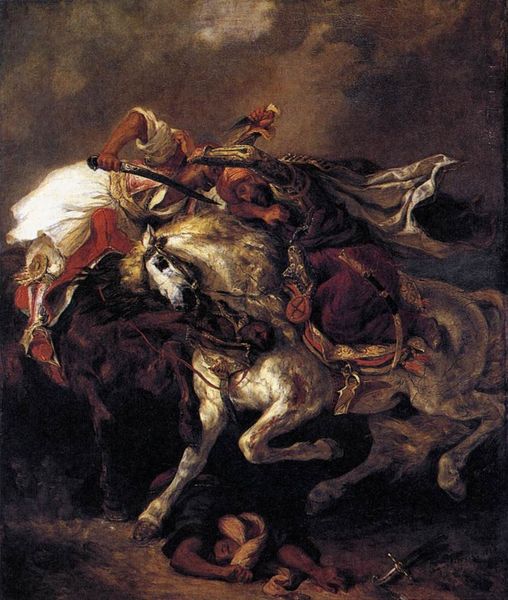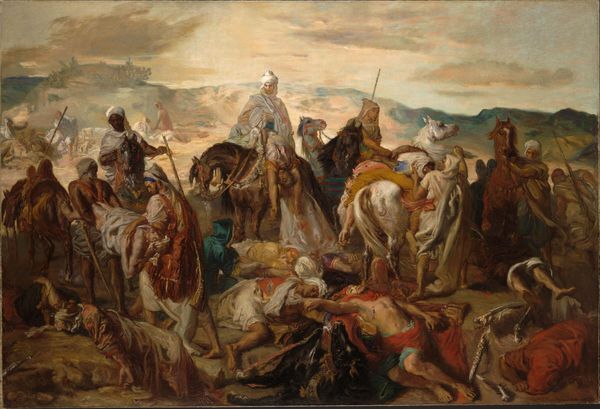
Copyright: Public domain
Curator: This is Thomas Jones Barker's "Riderless War Horses After the Battle of Sedan," created in 1873, using oil paint. Editor: It's incredibly bleak, isn’t it? Just devastation and exhaustion rendered in oil paint. The palette feels muted, reflecting the heavy mood. It smells of rain and gunpowder, somehow. Curator: Barker's approach here reveals much about the late 19th-century fascination with war's impact. Notice how the landscape and the surviving animals are central, moving away from glorifying battle. It becomes a story of raw materials transformed by conflict. Editor: And the composition! Our eyes are immediately drawn to that weary horse in the foreground, but the distant fires and the broken carriages give such an overwhelming feeling of loss. Even the horse’s tack looks…discarded, hastily made, you know? Curator: Exactly! And this connects directly to industrial developments during the Franco-Prussian War. Think about the manufacturing and transport of military equipment. Each shattered carriage wheel symbolizes industrial effort reduced to wreckage. Editor: There’s something heartrending about the absence of people. Their absence is so loud, isn’t it? The war is reduced to this tableau of surviving horses, like witnesses who can’t speak. Are we meant to infer that this battle took place in order to create waste and fodder, it all feels like pure surplus. Curator: Indeed. And the question becomes: whose surplus? Which nations benefited from this expenditure of human and animal capital? These questions are deliberately foregrounded, literally, in the ravaged bodies of these horses and the wreckage. The war machine consumes and discards indiscriminately. Editor: I think you are so right about that question being “foregrounded.” What lingers is this unsettling emptiness—the ghost of human intention played out in the exhausted bodies and the remnants of these mute beasts of burden. Almost seems disrespectful, our discussing a creative decision as being the outcome of a wasteful end. Curator: Agreed. And through Barker’s careful arrangement of figures and setting, the focus shifts from heroism to the sobering materiality of war's costs and byproducts. Editor: Seeing how materials reflect social consequence is powerful in ways I never anticipated.
Comments
No comments
Be the first to comment and join the conversation on the ultimate creative platform.

